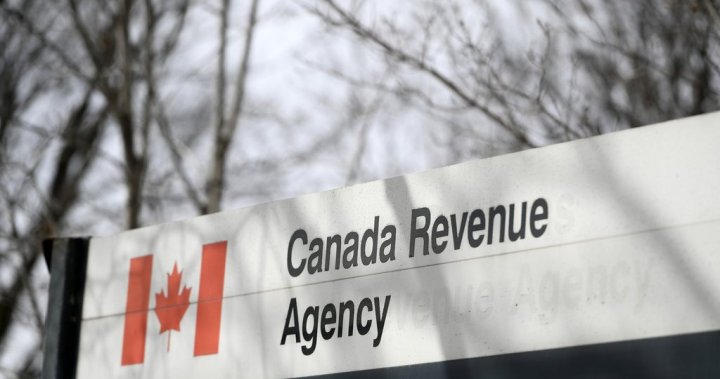Article – As Ottawa’s first significant snowfall silently transformed Parliament Hill yesterday, Canada’s federal taxpayer watchdog delivered a much less quiet assessment of the Canada Revenue Agency’s communication practices. Standing before a gathering of reporters and policy analysts at the National Press Theatre, Taxpayers’ Ombudsperson François Boileau unveiled his latest report examining how the CRA engages with everyday Canadians.
“What we found should concern everyone who files taxes in this country,” Boileau said, his voice carrying the weight of thousands of complaints his office has processed. “When Canadians can’t understand what the CRA requires of them, the relationship between citizens and their tax authority fundamentally breaks down.”
The 87-page report, titled “Beyond Jargon: Rebuilding Trust Through Clear Communication,” documents widespread confusion among taxpayers trying to navigate CRA correspondence, online portals, and telephone services. Most troubling were findings that 62% of Canadians surveyed found at least one recent CRA communication “difficult or impossible to understand” without professional assistance.
For Melissa Chung, a small business owner in Burnaby, BC, the report validates frustrations she’s experienced firsthand. “Last year, I received three different letters about the same business deduction, each saying something slightly different,” Chung told me during a community forum in Vancouver last month. “I spent over $800 on accountant fees just to translate what the CRA was asking for.”
The ombudsperson’s investigation revealed systemic issues with how the agency communicates tax obligations. CRA letters frequently contain paragraphs exceeding 40 words, filled with technical terminology without plain language explanations. One notice of assessment examined by investigators contained 19 different acronyms without definitions.
“The CRA seems to write for tax professionals, not ordinary Canadians,” notes Toby Sanger, Executive Director of Canadians for Tax Fairness. “Clear communication isn’t just about customer service—it’s about fairness and accessibility in our tax system.”
Data from the report shows disparities in who bears the heaviest burden of this communication gap. New Canadians, seniors, and those with lower education levels reported spending an average of 4.3 additional hours per year attempting to decipher CRA communications compared to other demographics.
The timing of the report coincides with preparations for the upcoming tax season. Last year, the CRA processed more than 31 million individual tax returns while fielding approximately 23 million calls to its various support lines. According to agency statistics, average call wait times exceeded 32 minutes during peak filing periods.
Internal CRA documents obtained through access to information requests reveal the agency’s own quality control assessments flagged communication issues in 2022. One internal memo acknowledged that 41% of standard letters sent to taxpayers failed basic readability standards.
Finance Minister Chrystia Freeland responded to the report during yesterday’s Question Period, acknowledging the findings while defending recent investments in CRA modernization. “We’ve committed $1.2 billion over five years to improve service delivery at the CRA,” Freeland stated. “Clearer communication with Canadians is central to that effort.”
Conservative revenue critic Adam Chambers was less diplomatic. “This government has turned the tax system into a maze that ordinary Canadians can’t navigate,” Chambers said during a media scrum. “When people don’t understand their obligations, we see accidental non-compliance and unnecessary penalties.”
The report makes 15 recommendations, including mandatory plain language training for CRA correspondence writers, simplified online interfaces, and creation of dedicated phone lines for vulnerable populations. Notably, it calls for all standard CRA communications to be written at a grade 8 reading level—currently, many exceed grade 12 complexity.
Walking through Ottawa’s Byward Market after the report’s release, I spoke with several residents about their experiences with the tax agency. Mary Kowalski, a retired nurse, summed up a common sentiment: “I’ve worked and paid taxes for 43 years, and I still get confused by half the letters they send me. Something’s wrong with that picture.”
The ombudsperson’s findings align with the results of the 2023 Public Service Employee Survey, where only 57% of CRA staff reported believing the agency communicated effectively with the public—down 11 percentage points from 2019.
CRA Commissioner Bob Hamilton has promised a formal response within 30 days, telling reporters the agency “takes these findings seriously” and is already implementing changes to simplify communications.
For Jean-Paul Martin, a tax preparer in Moncton who assists low-income clients, improvements can’t come soon enough. “Every tax season, I see people who’ve missed benefits they’re entitled to simply because they couldn’t understand CRA notices,” Martin explained. “These aren’t just paperwork problems—they impact real lives.”
The report recommends the creation of a permanent plain language unit within the CRA to review all standard communications before they reach taxpayers. It also suggests more visual aids, simplified online pathways, and better training for call center employees.
As Parliament wraps up its fall session next week, the House of Commons Finance Committee is expected to call Boileau to testify about his findings. Committee chair Peter Fonseca has indicated the report will inform upcoming pre-budget consultations.
Standing in the shadow of Parliament’s Peace Tower yesterday afternoon, Boileau emphasized that clear tax communications reflect democratic values. “When government speaks in a language citizens can’t understand,” he said, “it erodes the very foundation of our social contract.”
For millions of Canadians preparing to file their 2024 returns in the coming months, that’s a message that requires no translation.






